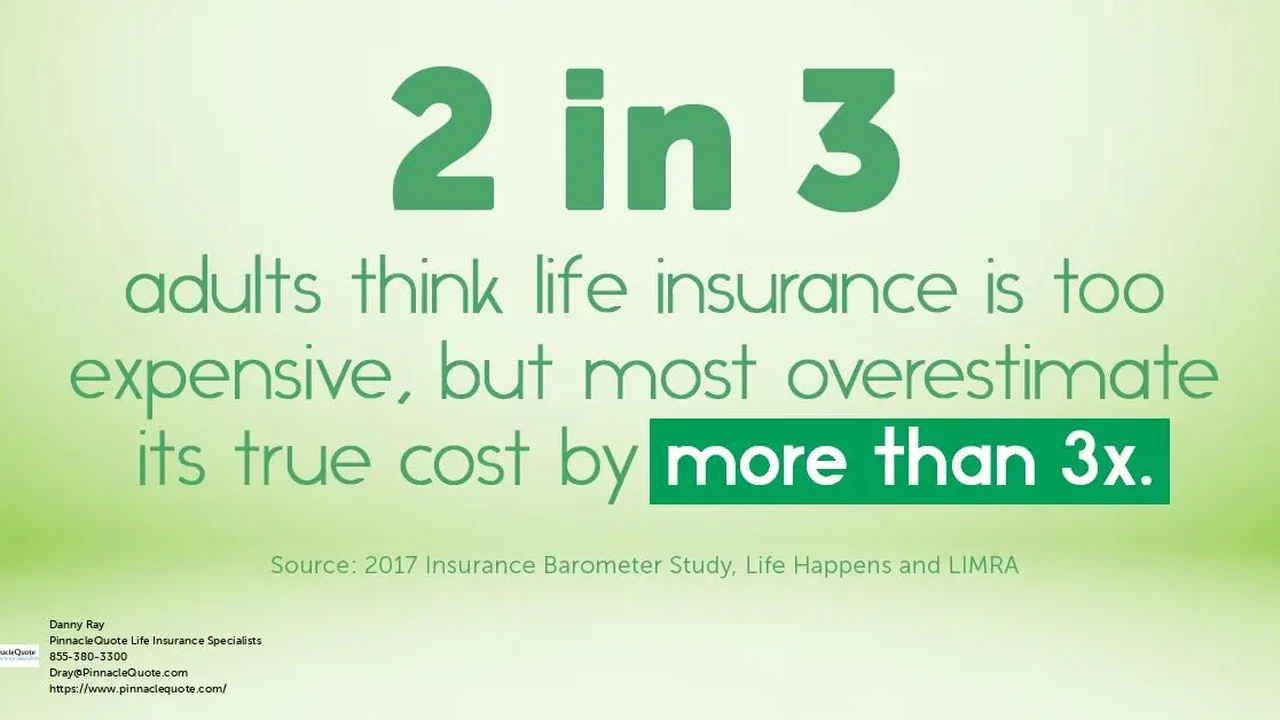Common Mistakes to Avoid When Buying Term Life Insurance
Learn about common pitfalls to avoid when purchasing term life insurance to ensure you get the right coverage.

Learn about common pitfalls to avoid when purchasing term life insurance to ensure you get the right coverage.
Common Mistakes to Avoid When Buying Term Life Insurance
Buying term life insurance is a crucial step in securing your family's financial future. It provides a safety net, ensuring that your loved ones are protected financially if something unexpected happens to you. However, the process can be complex, and many people make common mistakes that can lead to inadequate coverage, higher premiums, or even the wrong type of policy altogether. This article will walk you through the most frequent errors to avoid when purchasing term life insurance, offering practical advice and specific product recommendations to help you make informed decisions.
Mistake 1 Not Buying Enough Coverage Understanding Your Term Life Insurance Needs
One of the most significant mistakes people make is underestimating how much life insurance they actually need. It's not just about covering immediate funeral costs; it's about replacing your income, paying off debts, funding future expenses like college tuition, and ensuring your family can maintain their lifestyle. Many financial experts recommend a coverage amount that is 10 to 15 times your annual income, but this is a general guideline. Your specific needs will depend on your unique financial situation.
How to Calculate Your Term Life Insurance Needs
A good way to calculate your needs is using the DIME method:
- Debt: Add up all your outstanding debts, including mortgage, car loans, credit card debt, and personal loans.
- Income: Multiply your annual income by the number of years your family would need financial support (e.g., until your youngest child is grown, or your spouse retires).
- Mortgage: Include the full outstanding balance of your mortgage.
- Education: Estimate future education costs for your children, if applicable.
Don't forget to factor in other future expenses like childcare, healthcare, and daily living costs. It's always better to err on the side of slightly more coverage than too little.
Recommended Products for Adequate Coverage
For substantial coverage, consider policies from reputable insurers known for their financial strength and competitive rates. For example:
- Haven Life (backed by MassMutual): Offers fully online application processes and competitive rates for healthy individuals, often with no medical exam for certain coverage amounts. Ideal for those seeking quick and substantial coverage. A 30-year-old non-smoker might find a $1,000,000 20-year term policy for around $40-50 per month.
- Policygenius (Brokerage): While not an insurer itself, Policygenius allows you to compare quotes from multiple top-rated carriers like Pacific Life, Transamerica, and Lincoln Financial, ensuring you find the best rate for your desired coverage amount. This is excellent for comparison shopping.
- Northwestern Mutual: Known for its strong financial ratings and personalized service, offering robust term life options that can be converted to whole life later. While potentially pricier, their customer service and financial stability are top-tier.
Mistake 2 Choosing the Wrong Term Length Matching Your Term Life Insurance to Your Life Stages
Another common error is selecting a term length that doesn't align with your financial obligations. Term life insurance is designed to cover you for a specific period, typically when your financial responsibilities are highest. Common term lengths are 10, 15, 20, 25, or 30 years.
When to Choose Which Term Length
- 10-15 Year Term: Suitable if your major financial obligations (e.g., mortgage, children's education) are nearing completion.
- 20-25 Year Term: A popular choice for young families with a new mortgage and young children, aiming to cover the period until children are financially independent and the mortgage is paid off.
- 30 Year Term: Ideal for those just starting a family or buying their first home, providing coverage for the longest period of significant financial responsibility.
Choosing a term that's too short might leave your family unprotected later, while a term that's too long might mean paying for coverage you no longer need at a higher premium than necessary.
Product Scenarios for Term Lengths
- For a young couple with a new 30-year mortgage and plans for children: A 30-year term policy from Protective Life or Banner Life (Legal & General America) would be a strong contender. Both offer competitive rates for longer terms and are financially stable. A 35-year-old couple might find a $750,000 30-year term policy for around $60-80 per month, depending on health.
- For parents with children entering college in 10 years: A 10 or 15-year term from State Farm or GEICO Life Insurance (via partners) could be appropriate. These companies are well-known and offer straightforward term policies.
Mistake 3 Focusing Only on Price The Value of a Reputable Term Life Insurance Company
While affordability is important, making price your sole criterion can be a costly mistake. A cheap policy from an unreliable insurer might not pay out when your family needs it most. It's crucial to choose a company with a strong financial rating and a good reputation for customer service and claims processing.
What to Look For in a Term Life Insurance Provider
- Financial Strength Ratings: Check ratings from agencies like A.M. Best, Standard & Poor's, Moody's, and Fitch. Look for ratings of A- or higher.
- Customer Service: Read reviews and check complaint ratios with organizations like the National Association of Insurance Commissioners (NAIC).
- Claims Process: Understand how easy or difficult it is to file a claim and the typical payout time.
Top-Rated Term Life Insurance Companies for Reliability
- MassMutual: Consistently receives high financial strength ratings and is known for excellent customer service. Their Haven Life subsidiary offers a modern, digital experience.
- New York Life: Another mutual company with top-tier financial strength and a long history of reliable payouts. They offer personalized service through agents.
- Pacific Life: Strong financial ratings and a wide range of term life products, often with competitive pricing for various health classes.
- Transamerica: Offers a variety of term life options and is a well-established name in the industry, though some customer service reviews can be mixed.
Mistake 4 Not Understanding Policy Riders Enhancing Your Term Life Insurance Coverage
Many people overlook the value of policy riders, which are optional additions that can customize and enhance your term life insurance coverage. While they add to the premium, they can provide significant benefits in specific situations.
Common and Useful Term Life Insurance Riders
- Waiver of Premium Rider: If you become disabled and can't work, this rider waives your premiums, keeping your policy in force.
- Accelerated Death Benefit Rider (Living Benefits): Allows you to access a portion of your death benefit while still alive if you're diagnosed with a terminal illness. This can be invaluable for covering medical costs or end-of-life care.
- Child Rider: Provides a small amount of term life coverage for your children, often convertible to a permanent policy later.
- Convertibility Rider: Allows you to convert your term policy into a permanent life insurance policy (like whole life or universal life) without a new medical exam, regardless of your health. This is crucial if your needs change and you want lifelong coverage.
Products with Excellent Rider Options
- Lincoln Financial Group: Known for offering a comprehensive suite of riders, including strong accelerated death benefit options and a robust convertibility feature.
- Principal Financial Group: Provides flexible term policies with various riders, including a valuable waiver of premium and options for critical illness.
Mistake 5 Delaying Purchase The Cost of Waiting for Term Life Insurance
One of the biggest mistakes is procrastinating. Life insurance premiums are primarily based on your age and health. The younger and healthier you are when you apply, the lower your premiums will be. Waiting even a few years can significantly increase your costs, especially if your health declines.
Why Buy Term Life Insurance Now
- Lower Premiums: Lock in a lower rate for the entire term.
- Better Health: You're likely healthier now than you will be in the future, making it easier to qualify for preferred rates.
- Peace of Mind: The sooner you have coverage, the sooner your family is protected.
Illustrative Cost Differences
Consider a 20-year term policy for $500,000:
- A healthy 30-year-old might pay around $25-35 per month.
- A healthy 40-year-old might pay around $40-60 per month.
- A healthy 50-year-old might pay around $80-120 per month.
These are approximate figures, but they clearly illustrate the financial benefit of buying sooner rather than later.
Mistake 6 Not Being Honest on Your Application The Repercussions of Misrepresentation in Term Life Insurance
It might be tempting to omit or downplay certain health conditions or lifestyle habits on your application to get a lower premium. However, this is a serious mistake that can have severe consequences. Insurance companies have a 'contestability period' (usually the first two years of the policy) during which they can investigate any claims and deny them if they find evidence of misrepresentation. Even after this period, fraud can lead to policy cancellation.
Why Honesty is the Best Policy
- Claim Denial: Your family might not receive the death benefit when they need it most.
- Policy Rescission: The insurer can cancel your policy and return the premiums paid, leaving you without coverage.
- Legal Consequences: In some cases, intentional fraud can lead to legal penalties.
It's always best to be completely honest and transparent about your health, medical history, and lifestyle. The insurer will uncover the truth during underwriting anyway, and it's better to get an accurate quote upfront than to risk your family's financial security later.
Mistake 7 Neglecting to Review Your Policy Regularly Keeping Your Term Life Insurance Up-to-Date
Life is dynamic, and your financial needs and responsibilities will change over time. What was adequate coverage five years ago might not be enough today. Many people buy a policy and then forget about it, which can lead to being underinsured.
When to Review Your Term Life Insurance Policy
- Major Life Events: Marriage, divorce, birth or adoption of a child, buying a new home, starting a business, or a significant increase in income.
- Every 3-5 Years: Even without major life changes, it's a good practice to review your policy every few years to ensure it still aligns with your goals.
- Changes in Health: If your health significantly improves or declines, it might be worth exploring options, especially if you have a convertible term policy.
What to Look For During a Review
- Coverage Amount: Is it still sufficient to cover your family's needs?
- Beneficiaries: Are they up-to-date? Have you added or removed anyone?
- Term Length: Is the remaining term still appropriate for your current obligations?
- Riders: Do you need to add or remove any riders?
Many insurers, like Nationwide or Guardian Life, offer online portals or dedicated agents who can help you review your policy and make necessary adjustments.
Mistake 8 Not Comparing Multiple Quotes Finding the Best Term Life Insurance Rates
Just like shopping for car insurance or a mortgage, comparing quotes from multiple providers is essential when buying term life insurance. Rates can vary significantly between companies for the exact same coverage, depending on their underwriting guidelines and target demographics.
How to Effectively Compare Term Life Insurance Quotes
- Use Independent Brokers or Online Comparison Tools: Websites like Policygenius, SelectQuote, or Quotacy allow you to input your information once and receive quotes from dozens of top-rated insurers.
- Be Consistent with Information: Ensure you provide the same coverage amount, term length, and personal details (age, health, smoking status) to each insurer for an accurate comparison.
- Consider Financial Strength and Customer Service: Don't just look at the lowest price; factor in the company's reputation and reliability.
Example Comparison Scenario
A 40-year-old healthy non-smoker seeking a $750,000, 20-year term policy might find:
- Company A: $55/month
- Company B: $62/month
- Company C: $48/month
Over 20 years, choosing Company C over Company B could save you over $3,360. This highlights the importance of shopping around.
Mistake 9 Confusing Term Life with Whole Life Understanding the Differences in Life Insurance Types
While both are types of life insurance, term life and whole life serve very different purposes. Confusing the two can lead to purchasing a policy that doesn't meet your long-term financial goals.
Term Life Insurance Key Characteristics
- Temporary Coverage: Provides coverage for a specific period (the term).
- No Cash Value: Does not accumulate cash value.
- Lower Premiums: Generally much more affordable than whole life insurance for the same death benefit.
- Pure Protection: Best for covering specific financial obligations that will eventually end (e.g., mortgage, raising children).
Whole Life Insurance Key Characteristics
- Permanent Coverage: Provides coverage for your entire life.
- Cash Value: Accumulates cash value that grows tax-deferred and can be borrowed against or withdrawn.
- Higher Premiums: Significantly more expensive than term life.
- Investment Component: Can be used as a financial tool for wealth accumulation and estate planning.
When to Choose Which
- Choose Term Life: If you need coverage for a specific period, want the most affordable option, and prefer to invest separately.
- Choose Whole Life: If you need lifelong coverage, want a guaranteed cash value component, and are looking for a more complex financial product that can be part of an estate plan.
Mistake 10 Not Designating Contingent Beneficiaries Ensuring Your Term Life Insurance Payout
Many people name a primary beneficiary but forget to designate contingent beneficiaries. A contingent beneficiary receives the death benefit if the primary beneficiary passes away before you do. Without a contingent beneficiary, the death benefit might go into your estate, potentially delaying the payout and subjecting it to probate, which can be a lengthy and costly legal process.
Why Contingent Beneficiaries are Crucial
- Avoid Probate: Ensures a direct payout to your chosen individuals, bypassing the probate court.
- Prevent Delays: Speeds up the process of your loved ones receiving the funds.
- Maintain Control: Ensures your wishes are followed even if your primary beneficiary is no longer able to receive the funds.
How to Designate Beneficiaries
When filling out your application or reviewing your policy, clearly name both primary and contingent beneficiaries. Be specific with names and relationships. You can also designate percentages if you have multiple beneficiaries.
By avoiding these common mistakes, you can navigate the process of buying term life insurance with confidence, ensuring your family receives the financial protection they deserve when they need it most. Take the time to research, compare, and understand your policy, and don't hesitate to seek advice from a qualified financial advisor or insurance professional.
:max_bytes(150000):strip_icc()/277019-baked-pork-chops-with-cream-of-mushroom-soup-DDMFS-beauty-4x3-BG-7505-5762b731cf30447d9cbbbbbf387beafa.jpg)





